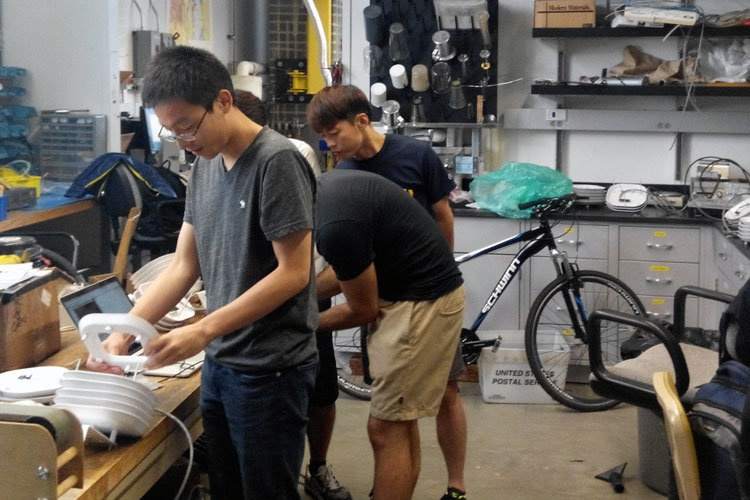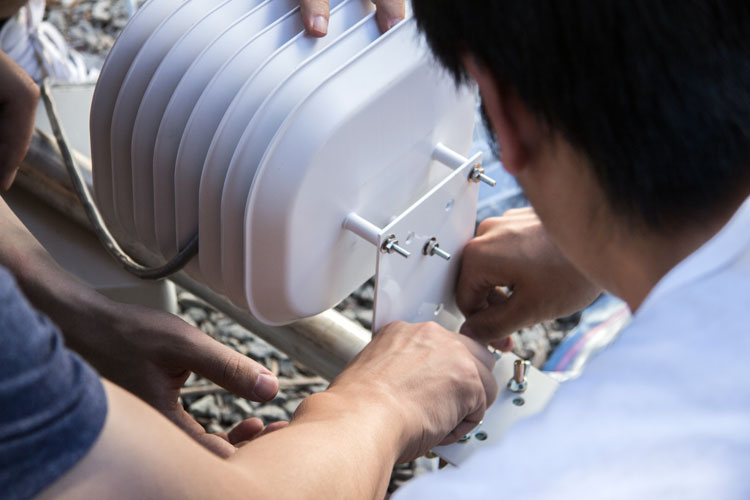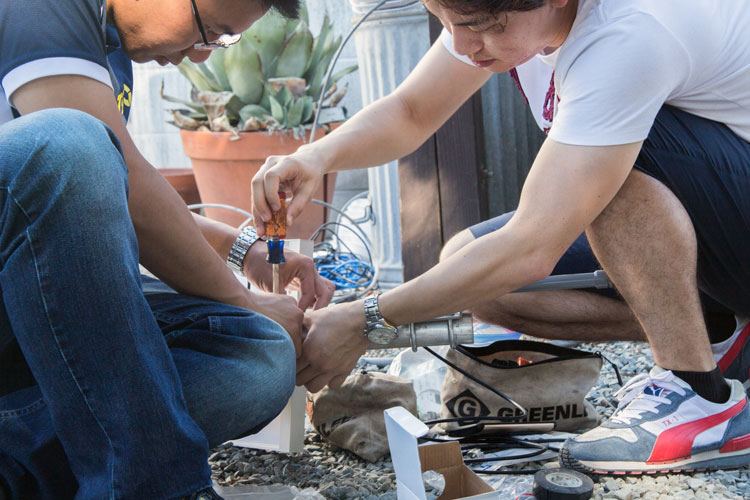Student-installed sensors help monitor Botanical Garden
Students designed and installed an array of wire sensors to monitor temperatures and humidity at the UC Botanical Garden.
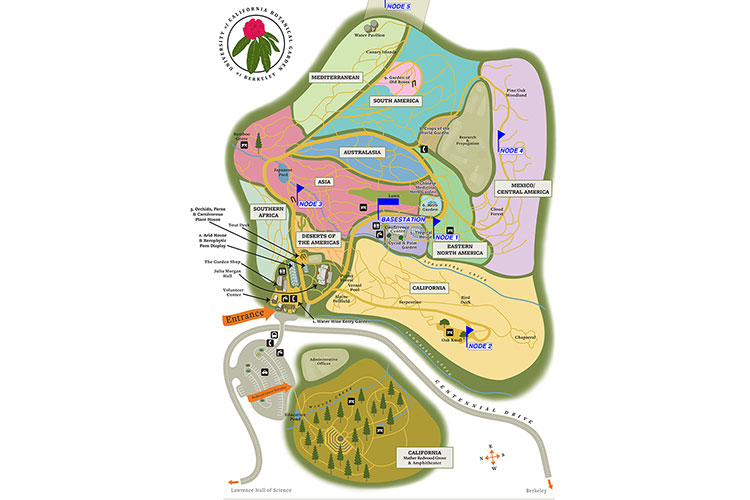
October 20, 2015
Students are helping the UC Botanical Garden to monitor humidity and extreme temperatures via five wireless sensor stations recently installed at the sprawling Strawberry Canyon site.
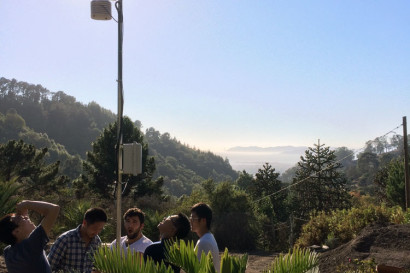
Students install a sensor tower in the UC Botanical Garden to monitor temperatures, humidity and more. (Photo by the class’s Internet of Things team)
A couple of questions that might be answered by the class project, says garden curator Holly Forbes, include just how extreme temperatures in the garden are and how moist the soil gets.
The garden already is equipped with two weather stations and rain gauges, but the new sensor network should supplement that information.
The sensors — located in areas of chaparral, Mexican/Central American plantings, the Asian area, a region devoted to plants from eastern North America and a research section near the Mediterranean Area — are designed to measure temperature, humidity, soil water content and solar radiation.
They went up last week as part of a fall semester class on sensors and signal interpretation taught by Berkeley’s Steven Glaser, a professor of civil and environmental engineering.
“I wanted one of my class teams to work with wireless sensor networks,” says Glaser. “We needed a cool place for them to set up and measure something, and I figured it might as well be useful. My wife and I go to the Botanical Garden ourselves, so I asked them if we could work together.”
The UC Botanical Garden is a nonprofit research garden and museum. Established in 1890, it has more than 11,000 kinds of plants from around the world, including rare and endangered plants, cultivated by region in naturalistic landscapes over 34 acres.
The garden is open 9 a.m.-5 p.m. daily, but is closed the first Tuesday of every month. More information about garden research, tours and programs is online.
